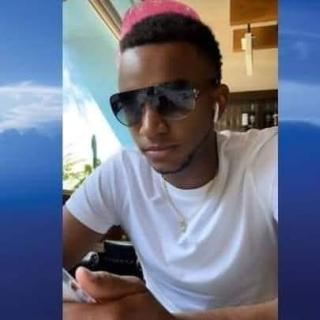When: Tuesday, August 25th from 1pm until 3pm.
Where: A car caravan protest will circle the OSU Columbus campus, beginning from Bricker Hall on Annie and John Glenn Ave. A socially-distanced rally will take place at and around Bricker Hall.
Who: The Graduate Student Labor Coalition, an organization to build collective power among graduate and professional students at OSU, across all colleges and departments. The GSLC advocates for policies that are emblematic of an anti-racist culture, value fair compensation for graduate student labor, promote a collaborative and supportive work environment, and further a productive and restorative relationship with the greater Columbus and University communities.
What: Graduate students and their supporters will gather at Bricker Hall to protest OSU’s return to campus during COVID-19 and the continued exploitation and dismissal of graduate students’ concerns. Members of the Graduate Student Labor Coalition, Ohio State Student Solidarity, and other groups will give speeches and march around Bricker Hall. The in-person protest will culminate in protestors laying their protest signs up against Bricker Hall and silently dispersing. The car caravan will drive around the OSU campus from 1:30pm-2:30pm. Cars will be outfitted with signs and paint. The route will go west on Woodruff, south on Tuttle Park Place, west on Annie and John Glenn, down to the Ohio Union and then circle back to repeat.
At both the in-person rally and the car caravan, graduate students and their supporters will demand the following:
- The right to opt-out of all in-person activities during the pandemic.
- The reinstatement of cost of living adjustments for graduate students.
- A meeting with administrators to discuss the demands in the GSLC’s June 16th open letter, as well as additional demands around anti-racism.
Why: Graduate students are one of the most vulnerable and exploited groups of workers on college campuses, a condition that has been further exacerbated by the COVID-19 pandemic. Graduate students at OSU are joining a national fight to gain recognition and support for their labor as educators and researchers. As the OSU administration has yet to adequately meet the GSLC’s demands, this action seeks to build broader awareness of graduate student concerns.
Demands:
*A brief note on this document:
We believe that this work should not be in the hands of a task force of volunteer graduate students, especially given the lack of direct action and transparency displayed thus far. This institution possesses the means and capabilities required to enact these demands should it meaningfully desire to do so without calling upon the free labor of its student body. The onus of guiding faculty and administration through the steps of change should also not be on full-time graduate students of color who are not compensated for this work, have not seen their concerns addressed over the course of years, and exist and work in a power structure that suppresses their ability to communicate honestly with faculty and administrators.
Recruitment, Retention, and Promotion of POC Faculty and Staff
The university-wide deficit of administrative faculty of color and tenure-track faculty of color must be addressed. OSU’s “Diversity Data” from 2016 shows that 2.6% of full professors are Black, and 2.7% are Hispanic, while over 77.7% are White. In addition, Black students hold fewer TA and RA associateships (3.2% and 2.3%,respectively), as do Hispanic students (5.9% and 3.8%), while 52.9% of TA associateships are granted to White students, with 45.1% of RAs. Research and teaching experience is critical to professional development. Similarly, a report of University retention rates by race and ethnicity show that significantly lower levels of Black undergraduate students are graduating within four years (49.5%) than White students (68.5%).
Across the University, there is an overwhelming lack of representation of tenured faculty of color, which must be immediately addressed. This deficit stems from a further lack of specific attention to the hiring of Black and Brown people entering the professoriate into tenure-track faculty appointments, in addition to administrative positions of power such as department administrative positions. A review of Ohio State University’s “Diversity Data” from 2016 reveals that less than 3% of full professors are Black, while over 75% of full professors are white. OSU further reports that less than 4% or 3% of graduate teaching and research associateships are granted to Black students, while over 52% of teaching and 45% research associateships are granted to white students. As tenured faculty know, research and teaching experience during graduate education are critical to graduate students’ scholarly professional development.
Therefore, we demand the University implement recruitment and retention policies and procedures that intentionally create an institutional culture in which Black, Indigenous, and People of Color are recruited and supported throughout graduation and the hiring process as faculty and administrators. These policies should give specific attention to the hiring of Black and Brown students for tenured professorships, as well as departmental chair positions and other positions of institutional power.
Any initiatives or positions that are created in relation to this demand should be sustainable over the long-term and supported through budget-enhancing resources.
Provide Resources to Faculty and Teaching Assistants to Attend and Host Cultural Sensitivity Trainings
Our classrooms and learning spaces must be actively anti-racist. This requires resources that go beyond the classroom, to educate and equip faculty and graduate students to be able to engage in anti-racist pedagogy across the entire university. Topics covered in this training would include microaggressions and more nuanced racism, tone policing, white fragility and defensiveness, debunking myths on affirmative action and ‘diversity hires,’ and Black & Brown student’s imposter syndrome as linked to racial trauma. In addition, university-wide anti-racist organizations will work with each department to address and challenge the racism present in each attendant field. There must be a focus on intentional and inclusive classroom guidelines for instructors to support them in crafting classroom and learning spaces that are safe environments for all their students with particular attention to the specific needs of marginalized student populations.
Enforce department-specific approaches to critically analyzing and restructuring disciplinary norms that are systematically racist. This is distinctly different from generalized instances of racism, such as micro-aggressions, which is detailed further below. These approaches might look like:
- Recognizing the specific impacts of white supremacy in a unit’s discipline, notably the erasure of and/or difficulties to entry for Black scholars and artists.
- Updating curriculum standards to include and/or center both historicaland contemporary Black authors, creators, and stories.
- Actively recruiting Black and Brown students with the understanding that they may have been underserved by learning institutions because of systemic factors outside of their control.
- Mandating coursework in Black history, ethnic studies, and the impact of white supremacy in academia in all disciplinary programs. This coursework should be led by culturally competent professionals. https://www.sfgate.com/news/article/California-State-University-eyes-ethnic-studies-15424892.php
- Actively recruiting and hiring Black and Brown faculty and staff with the understanding that their lived experiences are invaluable contributions to teaching and learning.
Any initiatives or positions that are created in relation to this demand should be sustainable over the long-term and supported through budget-enhancing resources.
Cut ties with Columbus Police Department and divest from Prison Industrial Complex
The Columbus Police Department is among the most violent police departments in the country and is responsible for a litany of racist abuses. As expressed earlier in our statementon police violence, the GSLC fully supports the demands made by the Undergraduate Student Government, Inter-Professional Council, and Council of Graduate Students in their June 1 letterto end OSU’s collaboration with CPD.
In addition, we demand an end to Ohio State’s practices of profiting from incarceration. We join the callfor OSU to end the use of prison labor for Ohio Stadium and urge the university to divest from any holdings in private prison companies, including G4S, GeoGroup, and CoreCivic.
Cut ties with Tel Aviv University for their participation in racist policing in the occupied Palestinian territories
GSLC stands in solidarity with Students for Justice in Palestine in their callfor OSU to cut ties with Tel Aviv University. Built on the ruins of Shaykh Muwannis, a Palestinian village whose inhabitants were expelled during the Nakba in March of 1948, Tel Aviv University continues to contribute to Palestinian dispossession today. This takes the form of withholding Palestinian bodies, such as the body of Ahmad Erekat, a Palestinian killed by Israeli Border Police at a military checkpoint in the West Bank last month, as well as contributing to military research for the IDF. In addition, discriminatory Israeli restrictions on freedom of movement and speech compelled the Department of Social and Cultural Analysis at New York University to pass a pledge of non-cooperation with study abroad programs in Tel Aviv last year for violation of university non-discrimination policies.
We echo these concerns and call on OSU to put their nominal anti-racist commitments into action by cutting institutional ties with Tel Aviv University.



